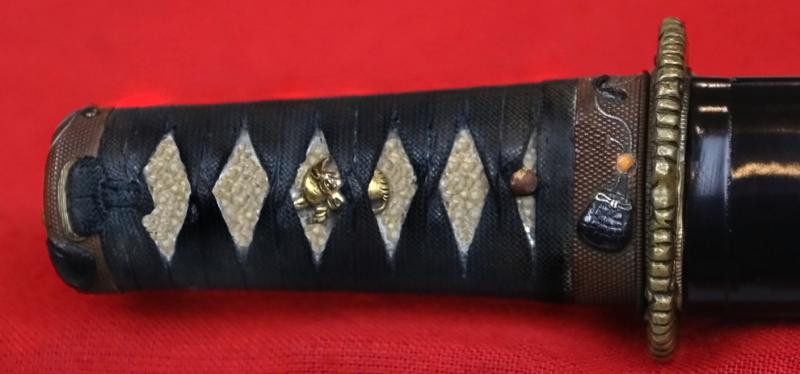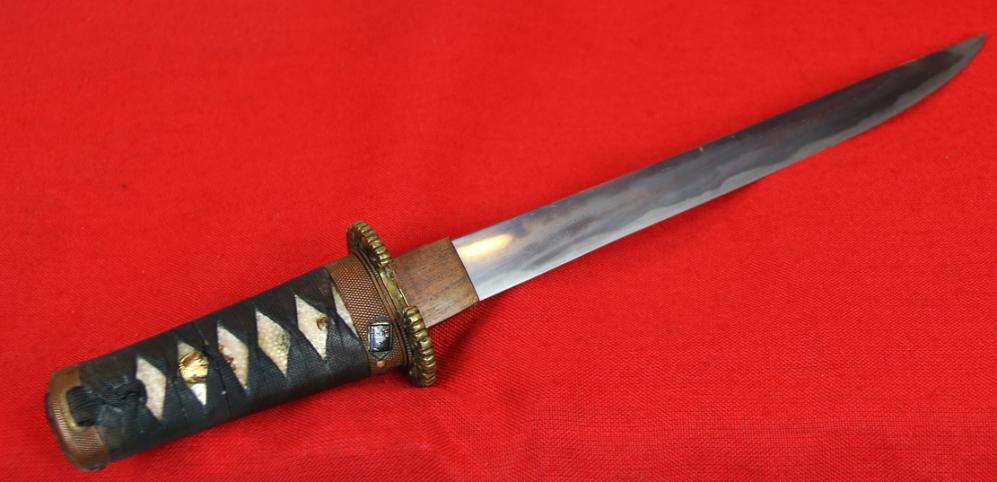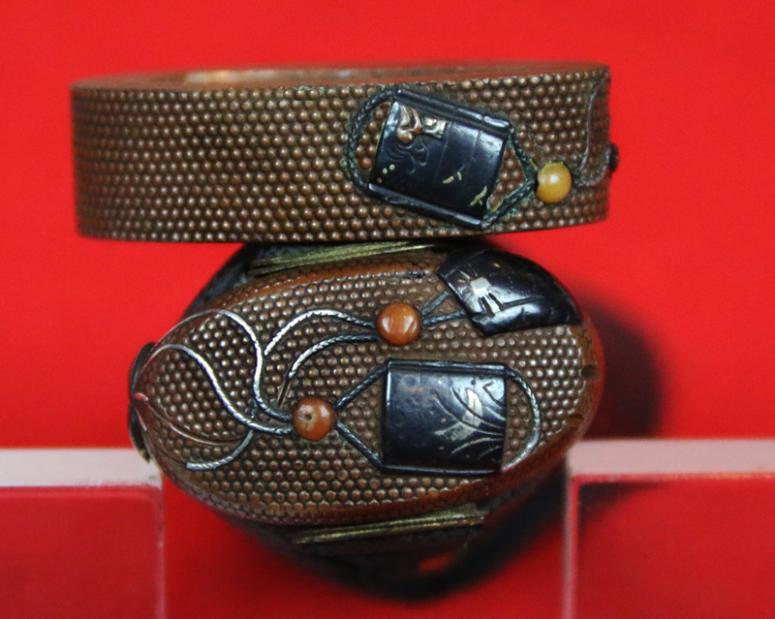A Marvelous Museum Quality Samurai Tanto, 15th Century, Signed Sukesada, A Famous Line of Exemplary Master Swordsmiths That Continued From the 1400’s To The End of The Tokugawa Shogunate. This Wonderful Tanto is Around 600 Years Old
The great line of smiths that started in the 15th century when this sword was made, and continued until the end of the Tokugawa Shogunate in the 1860’s. {Tanto, despite being referred to as samurai daggers, are always traditionally regarded as ‘swords’, irrespective of length.}
This is truly a wondrous ancient armour piercing bladed samurai tanto from the mid 1400's, is signed Sukesada, and the beautiful hamon is very clear to see, and is an undulating gunome. Complete with all original Edo period fittings, tsukaito and saya.
The saya is of lobster scale ribbed roiro urushi lacquer, with matte lacquer at the bottom section of the saya.
Cherished for its infinite versatility, urushi is a distinctive art form that has spread across all facets of Japanese culture from the tea ceremony to the saya scabbards of samurai swords
Japanese artists created their own style and perfected the art of decorated lacquerware during the 8th century. Japanese lacquer skills reached its peak as early as the twelfth century, at the end of the Heian period (794-1185). This skill was passed on from father to son and from master to apprentice.
The varnish used in Japanese lacquer is made from the sap of the urushi tree, also known as the lacquer tree or the Japanese varnish tree (Rhus vernacifera), which mainly grows in Japan and China, as well as Southeast Asia. Japanese lacquer, 漆 urushi, is made from the sap of the lacquer tree. The tree must be tapped carefully, as in its raw form the liquid is poisonous to the touch, and even breathing in the fumes can be dangerous. But people in Japan have been working with this material for many millennia, so there has been time to refine the technique!
The fuchigashira mounts are fabulous quality, of multi coloured shakudo and silver decorated over a hand punched nanako ground with carved takebori inro, with pellets of inlaid coral representing the inro's himo mounted ojimi. An inrō (印籠, lit., "pillbox") is a traditional Japanese case for holding small objects, suspended from the samurai's obi worn around the waist when wearing kimono. They are often highly decorated, in a variety of materials and techniques, often using lacquer. The tsuba is a takebori carved with flower petals in incredible detail. The menuki are gold recumbant water buffalo. The tanto was designed primarily as a stabbing weapon, but the edge can be used for slashing as well. Tanto are generally forged in hira-zukuri style (without ridgeline), meaning that their sides have no ridge line and are nearly flat, unlike the shinogi-zukuri structure of a katana. Some tanto have particularly thick cross-sections for armour-piercing duty, and are called yoroi toshi. The tantos primary use was a type of stabbing weapon, however, the blade could also be used for slashing as well. Some tanto were forged with a particularly thick cross section which was thought to aid in piercing the armour of enemies, this type of dagger would be called a yoroi toshi.
A tanto would most often be worn by Samurai, and it was very uncommon to come across a non samurai with a tanto. It was not only men who carried these daggers, women would on occasions carry a small tanto called a kaiken in their obi which would be used for self-defence. In feudal Japan a tanto would occasionally be worn by Samurai in place of the wakizashi in a combination called the daisho, which roughly translates as big-little, in reference to the big Samurai Sword (Katana) and the small dagger (tanto). Before the rise of the katana it was more common for a Samurai to carry a tachi and tanto combination as opposed to a katana and wakizashi.
As once told to us by an esteemed regular visitor to us here in our gallery, and the same words that are repeated in his book;
“In these textures lies an extraordinary and unique feature of the sword - the steel itself possesses an intrinsic beauty. The Japanese sword has been appreciated as an art object since its perfection some time during the tenth century AD. Fine swords have been more highly prized than lands or riches, those of superior quality being handed down from generation to generation. In fact, many well-documented swords, whose blades are signed by their makers, survive from nearly a thousand years ago. Recognizable features of the blades of hundreds of schools of sword-making have been punctiliously recorded, and the study of the sword is a guide to the flow of Japanese history.”
Victor Harris
Curator, Assistant Keeper and then Keeper (1998-2003) of the Department of Japanese Antiquities at the British Museum. He studied from 1968-71 under Sato Kenzan, Tokyo National Museum and Society for the Preservation of Japanese Swords
Overall 13.5 inches long overall, 9.25 inch blade
Code: 23245
7950.00 GBP










